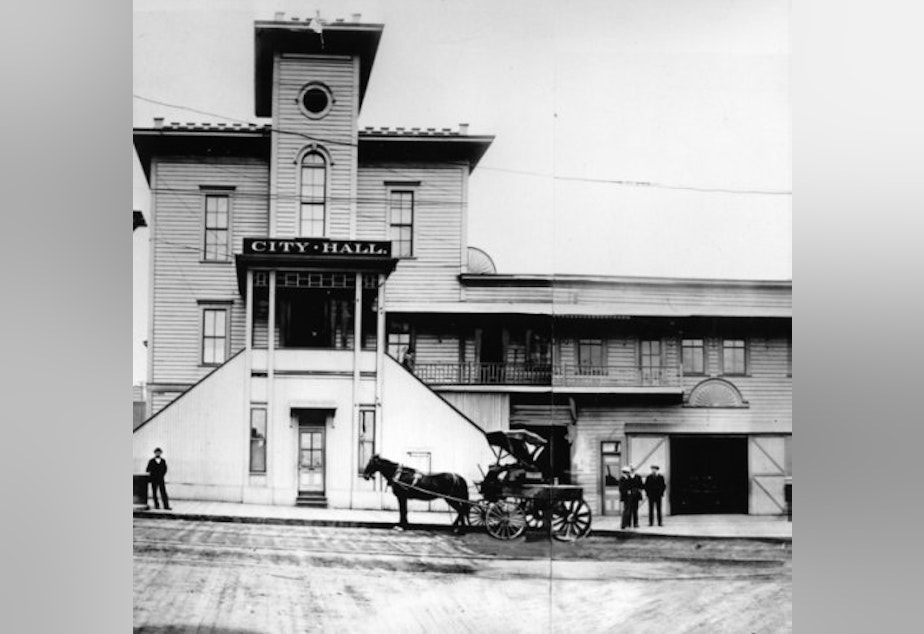The Sordid History Of Seattle Chain Gangs

Little surprises Knute Berger, writer and local historian, when it comes to Seattle history.
So when he discovered that Seattle had used chain gangs – ball and chain style – into the 1900s, he thought, “Chain gangs? That’s a Southern thing.”
Turns out, it's a Seattle thing too, as Berger told KUOW’s Jeannie Yandel. Berger wrote a four-part series about the city’s chain gangs for Crosscut. Most of the crews were made up of vagrants who worked on the chain to pay off fines from minor infractions.
“The vagrancy laws of the 19th century were very specifically designed to cover a huge number of people,” Berger said. “Prostitutes, homosexuals, anybody suspicious, drunks. If you didn’t have enough money to prove you could support yourself and the police didn’t like the looks of you, you went on the chain gang.”
The city liked these chain gangs – it was free labor, after all. And jails in those days were rickety, not built for a growing city. Putting people in a ball and chain slowed them down and prevented them from escaping a porous jail too easily.
Sponsored
At the time, the city also used the chain gang as a way to discourage outsiders from moving here. The city was struggling to keep up with overwhelming population growth. In 1880, about 3,500 people called Seattle home; the city grew to nearly 240,000 in 1910.
The rickety jail, too, was used as a deterrent. Outside the jail, some cells were in the basement of city hall – dubbed Katzenjammer Castle for the ad hoc architecture of a popular kids cartoon strip. Prisoners kept there were brutally treated, Berger said.
In his series, he wrote:
Underground cells referred to as The Tank, or Black Hole, were awash in sewage, poorly ventilated, vermin-filled and dark.
Over the next decade though, things only got worse. Disease could turn a jail sentence into a death sentence. Typhoid swept the jail in 1901. During a feared bubonic plague outbreak, the jail was highlighted as a potential source of the pestilence. Jailers as well as prisoners were at risk. The P-I called it a "hotbed of disease."
“They called it the black hole,” Berger said, “a place where prisoners were punished. They were put there on a bread and water diet. It was notorious throughout the country as vermin ridden, disease ridden.”
Sponsored
For Berger, these historic details resonate today. Seattle still grapples with homelessness.
“It’s still there in very similar manifestations,” he said. “People still get arrested because, as someone said back in the vagrancy law days, ‘You look funny or smell bad.’ That still happens.”
Read Berger’s series on Seattle’s chain gangs at Crosscut:
- Life on a chain gang
- Vermin, beatings & typhoid: Highlights of life in an early Seattle jail
- How women & socialists toppled Seattle chain gangs
- The surprising way Seattle used to deal with street harassment
This segment originally aired Oct. 23, 2014.

